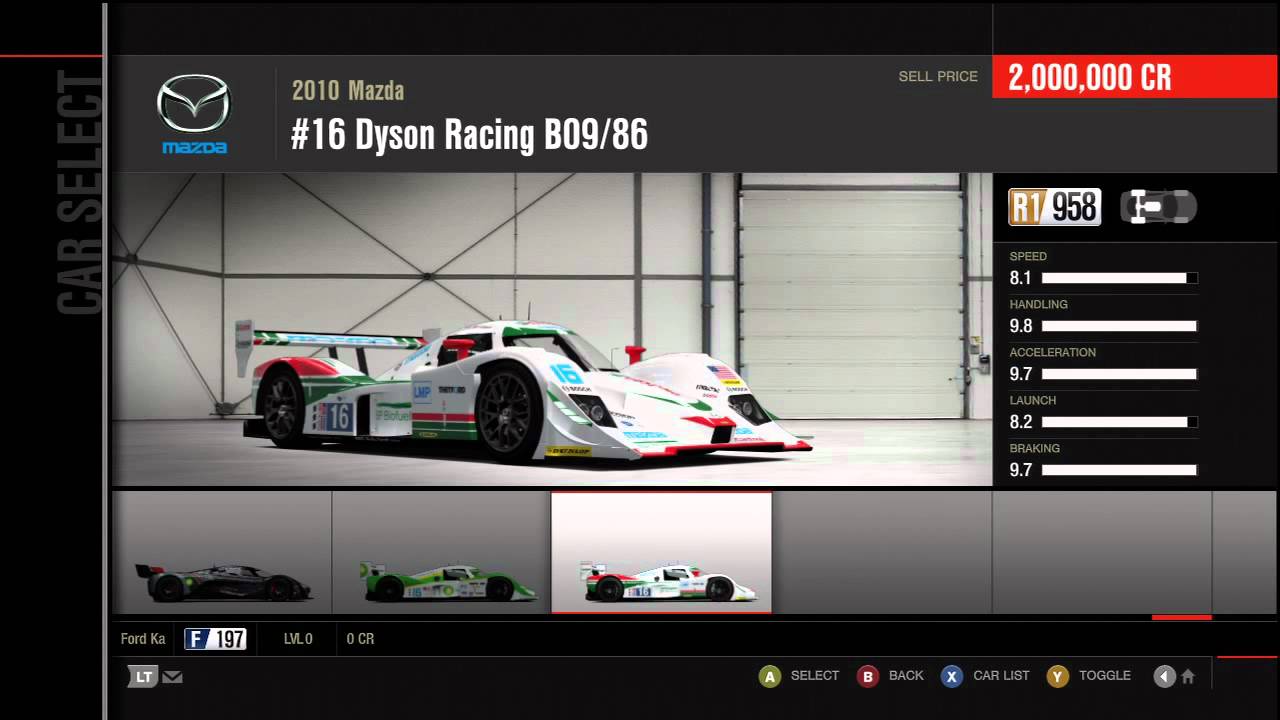Sorry for the necrobump on this thread but I wanted to do a search and comment rather than creating a new thread.
Regarding PP calculation, it would help to identify what actually changes PP on a car.
For the most part that would be items which modify the power/weight of the car, and the odd item related to downforce (Flat Floors for example).
Already there is an issue with this. Take the following 2 cars:
- Typical sports car, with stock brakes, suspension and gearing.
- Exact same car, now with racing brakes, adjustable (and tuned) suspension and modified gear ratios.
In terms of laptime, the second version of the car will be much faster than the original version in most cases.
However, the PP is exactly the same, as brakes, suspension and gearboxes have no effect on PP.
This is fundamentally wrong, and immediately proves that using PP alone to balance cars is a futile exercise.
For comparison's sake, let's take a look at the system used in
Forza Motorsport 4, the PI system.
Turn 10 provided a lot of insight into the PI system in the early days of
Forza Motorsport 4 after adjusting it to eliminate an exploit that many players had found with (not) installing gearboxes with longer stock ratios (if there are any Forza veterans here all I need to mention is the Dodge Dart and you know what I'm referring to). Since the launch of Forza Motorsport 5, Turn 10 have updated their website/forum which makes it harder to find the original posts so I'll simply paraphrase from memory here instead:
The PI system in-game is a representation of an AI car driving around a specially crafted track (which doesn't exist in-game, but is said to be similar to a pre-2010 Silverstone), driving a theoretically perfect racing line.
This "perfect laptime" is calculated and its result is represented as a PI number. The higher the PI, the "better" that car is.
So far this is pretty much the same system that I imagine
Gran Turismo 6 is using. However, this is also where the 2 games diverge.
While the PP system generally only takes power/weight/torque into consideration, the PI system factors in every additional part that can be added to a car (examples below).
- If you upgrade the flywheel, the PI could jump between 1 and 5 points.
- If you add racing suspension, the PI would increase by 10-20 points.
- If you switched from Street Tyres to Race Tyres, the PI would often change by 40 or more.
- Custom wheel rims (both in terms of size and weight) had effects in PI, with heavier rims actually making the PI do down.
- If you did a drivetrain swap (ie: converted an FF to FR, or an FR to AWD etc.) the PI would take a massive nosedive or increase dramatically. Naturally the car would drive differently as a result.
- If you installed a wing, PI would increase or decrease depending on how much downforce/drag it could produce.
As you can see, the PI system gave a far greater representation of the theoretical performance of a car than the PP system does, as it also took handling upgrades into consideration as well as the basics of power/weight/torque. It wasn't perfect, but more often than not the game did a pretty good job at balancing cars with its rating system.
When balancing cars for racing series in
Forza Motorsport 4, sometimes it was as simple as setting them to the same PI and you were done (assuming some basics such as each car using the same drivetrain). In fact, if you ignored the 3-4 "leaderboard cars" in each class, online lobby racing was remarkably balanced at certain PI levels (B/500 especially, which would be the equivalent of 450pp in GT6) considering how many variables were at play.
So that illustrates how a car rating system
should work in a game, and moreso how you can't rely on PP alone to balance any 2 cars in
Gran Turismo 6. As a matter of fact, you can't even rely on power/weight as upgradeable components such as suspension and transmission don't make any difference to PP at all.
The only way to balance cars in GT6 is to do it manually, by building cars, running laps and logging the data. Such a process takes a lot of time, and for career/lobby racing is simply not worth the effort. If balancing cars for a competitive racing series, then it must be done, but for anything else you can't rely on GT6's rating systems to keep cars on an even level.



